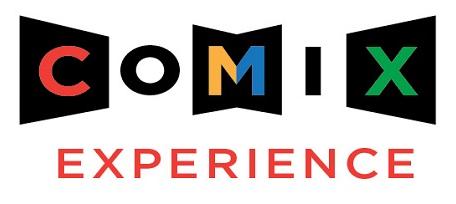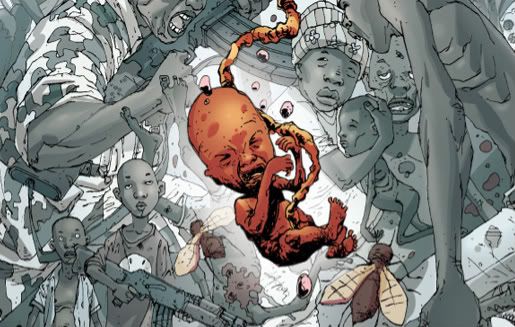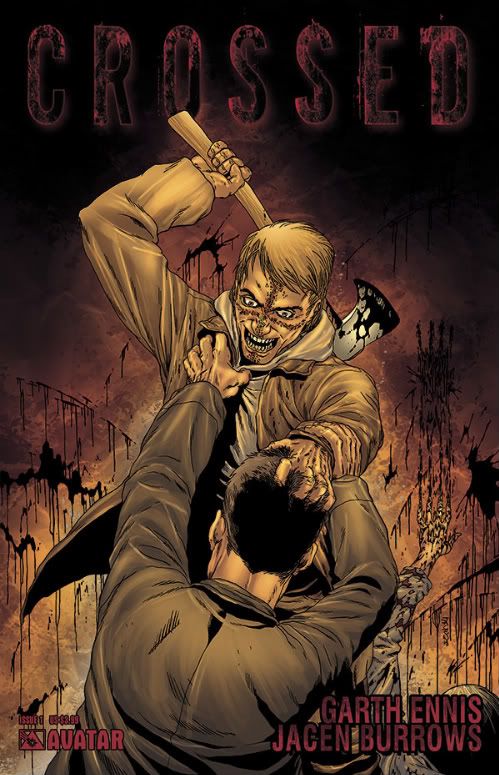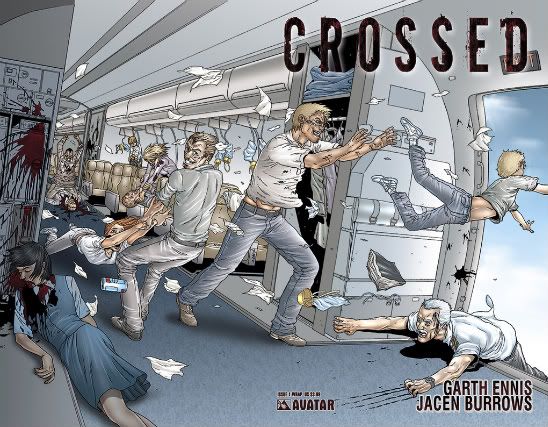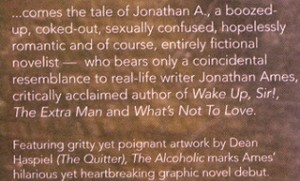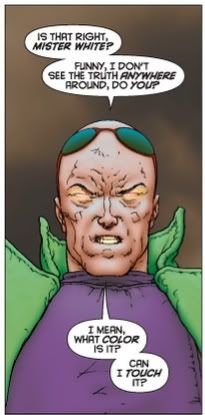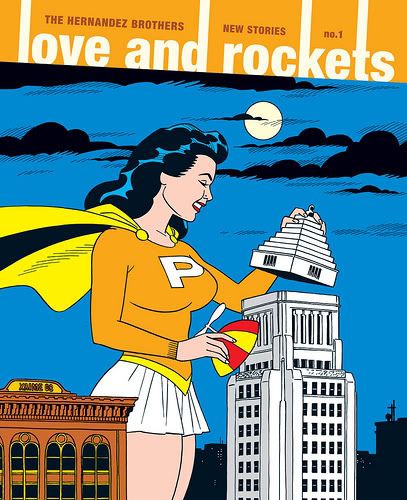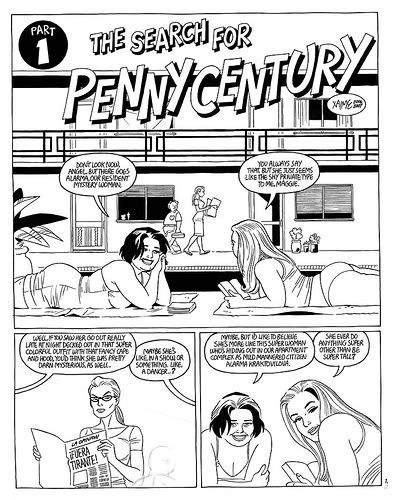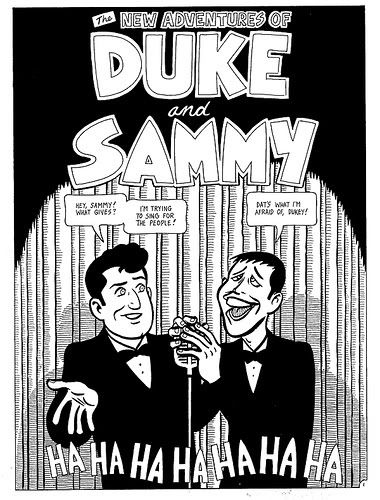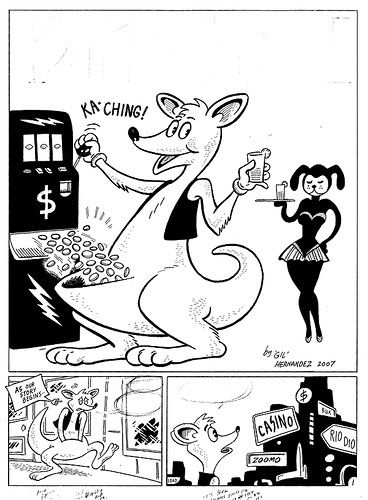 The choice seven months ago was either to do this essay series for SECRET INVASION or to do this essay series for FINAL CRISIS. With it becoming more apparent than ever that FINAL CRISIS has run off its rails or might not have been on rails to begin with, production-wise… I think it behooves me to begin this, the penultimate SECRET INVASION essay by respectfully acknowledging that I win again, suckers. Let’s just say that I picked the right series, and let’s just say that a lot of you comics bloggers didn’t, and let’s just say that means that I won at blogging about comics, everybody!
I know those of you who aren’t sore losers will wave while the sun shines on me in victory lane— I might even wave back. In the meantime, let me assure you that victory tastes pretty sweet. Here’s a photo of some kung fu guy chopping some bricks with the side of his hand:
The choice seven months ago was either to do this essay series for SECRET INVASION or to do this essay series for FINAL CRISIS. With it becoming more apparent than ever that FINAL CRISIS has run off its rails or might not have been on rails to begin with, production-wise… I think it behooves me to begin this, the penultimate SECRET INVASION essay by respectfully acknowledging that I win again, suckers. Let’s just say that I picked the right series, and let’s just say that a lot of you comics bloggers didn’t, and let’s just say that means that I won at blogging about comics, everybody!
I know those of you who aren’t sore losers will wave while the sun shines on me in victory lane— I might even wave back. In the meantime, let me assure you that victory tastes pretty sweet. Here’s a photo of some kung fu guy chopping some bricks with the side of his hand:

***
Here’s a summary of issues 1 through 6: what if a ship came to Earth with a bunch of 1970’s Marvel Characters on it? Answer: it doesn’t matter because they’d all be Skrulls, so we’d kill them. Nothing left to do for the remaining two issues of the series but to set up the next status quo in the Marvel Universe, CHOCOLATE RAIN.
What’s the over/under on CHOCOLATE RAIN? I think most people have been betting on “bad guys take over the Earth somehow or another,” but that doesn’t sound right. It doesn’t seem like a premise that can sustain itself for very long—or like a premise that will be easy to explain to audiences reading CAPTAIN AMERICA or DAREDEVIL in trades.
Let me just say this, though: I hope it involves superheroes growing goatees. Goatees, soul patches, maybe one or two porn-staches. I think it’d let people know that the CHOCOLATE RAIN Marvel Universe is a much more dangerous place. Because it’s been filled with awful hipsters. The new Black Panther is a self-facilitating media node; with breasts.
***
This last issue’s just going to be a big fight scene. We all know it-- nothing remotely interesting is going to happen. Maybe there will be some kind of interesting cliffhanger-- but experience with prior issues tells us there won’t be.
What the hell am I going to talk about?
***
A number of people are enjoying SECRET INVASION, and that’s great. Last time… you know, last time I might have gotten a little mean, and I don’t like that because my starting place for this series of essays was a very genuine affection for CIVIL WAR, for the recent Marvel crossovers, for old Marvel comics, and for the current crop of Marvel creators. I like the writer, artist and characters, but you know: everything isn’t for everybody.
So, let me try to be less snotty about it, and just say: look, it’s not what I wanted. We can all be angry people and throw around hurtful words like “mediocre” or “horrible” or “terrible” or “padded” or ‘slow” or “snail-paced” or “perfunctory” or “generic” or “unoriginal” or “vapid” or “empty” or “boring” or “dreary” or “unimaginative” or “shallow”. Where does that get us? SECRET INVASION, it’s just not what I wanted; that’s all. Someone else, it’s what they wanted, and good for them. And sure, we can throw around words like “bad” or “uninspired” or “uninteresting” or “un-good” or “stinky” or “dregs” or “dispiriting” or “illogical” or “malignant” or “poo” or “doo-doo” or “ugh” or “blech” or “yuck” or “nauseating” or “brain-dead” or “witless” or “deficient” or “laughable” or “undercooked” or “half-baked” or “pointless” or “aloha” or “swill” or “pablum” or “crappy” or “shitty” or “shit-for-brains” or “shit-from-an-ass” or “fart-faced” or “rotten” or “decrepit” or “thesaurus.” But-- what’s, that’s not, you know-- instead, let’s, uh... let’s not.
SECRET INVASION’s been sort of a bizarro version of CIVIL WAR, a series which I’d enjoyed. Oh, they have the same main character, Iron Man. Iron Man revealing the Skrull corpse launched the series; the Savage Land stretch turned on Iron Man; Iron Man reuniting the Avengers was the climax of the series to date. But beyond that:
CIVIL WAR was thematically about the Organization triumphing over the individual; SECRET INVASION tried to be about the triumphant Organization succumbing to corruption (uh, like, for one issue before focusing on external threats instead of true corruption). Bizarro. CIVIL WAR ends with Iron Man’s benevolent facism taking charge of the Marvel universe; SECRET INVASION unleashes the CHOCOLATE RAIN, if the promo materials are to be believed. Bizarro. The climax of CIVIL WAR is the Marvel Universe fracturing; the climax of SECRET INVASION is the Marvel Universe uniting. Bizarro. CIVIL WAR’s spin-offs explored different avenues that there wasn’t room to cover in the main series; SECRET INVASION’s spin-offs have been mostly pointless— my favorite are the ones where they go “Guess what the Skrulls were doing during the House of M? Nothing much. Just chilling.” Bizarro. CIVIL WAR didn’t rely on negativity towards foreign people who have a different color skin and a weird religion; SECRET INVASION… Bizarro.
With CIVIL WAR, the fun part of that series for me was that it was fundamentally about the Marvel characters making decisions. Instead of something just happening onto them, and them just lying there, like a cold fish, staring at the ceiling, half-heartedly trying to hold back a yawn, waiting out the twenty/thirty seconds it usually takes for me to be finished, politely ignoring my trembling and crying... Wait, what were we talking about again?
CIVIL WAR was 100% decisions. Iron Man decides this, Captain America decides that, Spiderman decides to take off his mask, Reed Richards decides to build a Clor. But with this series, they’ve totally abandoned that. None of the characters have made decisions. We know as much about every single character in this series as we did when we started because there’s been nothing at stake for any of them dramatically. The invasion’s just something that happened to them, like a car accident.
The only exception right now, that I can think of at least, is the Maria Hill jetpack scene-- still, in my opinion, the best scene in this series. But, shit, when Maria Hill’s the best thing about your Marvel crossover… you know you’re a redneck?
Git ‘er done, Issue 7!
************************************************
************************************************
************************************************
So…
This issue was certainly published. On paper. Big long fight; nobody that isn’t a Skrull dies. That's... nice...?
Lots to talk about with this issue. Just lots and lots. Lots and lots and lots. Any moment now, I’m going to figure out just so many things to say about this comic. Watch out for that.
...
[Ed. Note: Two days pass, in awkward silence…]
...
[Ed. Note: Sweat coming out of pores.]
...
[Ed. Note: It’s 3:00 a.m. I just want to go to sleep.]
Uhm: The Watcher shows up—and he’s wearing eyeshadow…? That’s sort of interesting; Jack Kirby characters in lady’s make-up.
 Why doesn’t that happen more often? Nothing else they’ve ever done with the Fourth World characters has ever worked; why not turn the NEW GODS into a burlesque revue? It can’t get any worse for those characters.
Why doesn’t that happen more often? Nothing else they’ve ever done with the Fourth World characters has ever worked; why not turn the NEW GODS into a burlesque revue? It can’t get any worse for those characters.
I like the Watcher; I like him in comics; I like when he shows up on that mediocre TV show FRINGE; I’m pro-Watcher. For me, “It Started on Yancy Street” (FF #29) is as good an issue of the Lee-Kirby FANTASTIC FOUR as you could ask for.
 It has that wonderful snowball quality where the adventure starts small and gets grander and grander as it contorts itself: it starts with someone throwing a head of lettuce at the FF, and ends on the moon, with plenty of stops along the way. I sometimes wonder if that's something the screenwriters or the manga-raised mainstream artists even know how to do anymore, if it isn't just something that's been lost.
It has that wonderful snowball quality where the adventure starts small and gets grander and grander as it contorts itself: it starts with someone throwing a head of lettuce at the FF, and ends on the moon, with plenty of stops along the way. I sometimes wonder if that's something the screenwriters or the manga-raised mainstream artists even know how to do anymore, if it isn't just something that's been lost.
***
It’s not that the fight scene offers no pleasure. I happen to like action comics. But not like this, not like this: It’s the Lord of the Rings idea of “action”. In those horrible, horrible Lord of the Rings movies, they’d just locked some nerd in a basement with a Macintosh and told him to generate 5 million Skeksis and Gelflings on top of each other. And then they’d just put that on screen for 4 hours at a time. That’s not action; that’s just a nerd with a Macintosh.
Part of my problem might just be as simple as I don’t usually enjoy an epic battle scene. There are obvious exceptions: SHAKA ZULU, say, or the Naval battle from BEN HUR. But I don’t sit around thinking fondly of BRAVEHEART, say; I never saw ALEXANDER or KINGDOM OF HEAVEN or the ALAMO. I didn’t make it a half-hour into TROY, though the parts I saw were very, very funny.
That having been said, here are 7 things that I typically like and look for in a superhero action scene-- with examples that... aren't the greatest action scenes I've ever seen, but just the ones that occurred to me, that had been memorable to me for some reason or another:
1. A Sense of Geography
 Here’s a page from my favorite action comic when I was a kid, the San Francisco X-men vs. Marauder fight in the UNCANNY X-MEN #222. In this page, Wolverine’s healing factor is on the fritz, so in order to avoid getting shot to death—he risks falling to his death by jumping off a bridge. I like how this page is all about where the three different characters are in relationship to the bridge. You can map it in your head; you can imagine it happening that much easier.
Here’s a page from my favorite action comic when I was a kid, the San Francisco X-men vs. Marauder fight in the UNCANNY X-MEN #222. In this page, Wolverine’s healing factor is on the fritz, so in order to avoid getting shot to death—he risks falling to his death by jumping off a bridge. I like how this page is all about where the three different characters are in relationship to the bridge. You can map it in your head; you can imagine it happening that much easier.
SECRET INVASION #7, on the other hand: the characters don’t interact with their environment. Are the Skrulls to the North or the South? Are they trying to get somewhere strategically important, and the superheroes are trying to stop them from getting there? Or visa versa?
2. Bad Guys
 These are two different pages combined, but: this sort of dopey villain named Roxxas versus the LSH from V4, Issue #10. Not a well-dressed villain or a very cool villain but-- this one bad guy systematically dismantles an entire team of superheroes over the course of an issue, and for me, it was memorable. It's better when the villains are the equal if not obvious superior to the good guys. If they have their own powers and abilities-- I'd like to see them being used against the good guy's powers. Or at least let them do something.
These are two different pages combined, but: this sort of dopey villain named Roxxas versus the LSH from V4, Issue #10. Not a well-dressed villain or a very cool villain but-- this one bad guy systematically dismantles an entire team of superheroes over the course of an issue, and for me, it was memorable. It's better when the villains are the equal if not obvious superior to the good guys. If they have their own powers and abilities-- I'd like to see them being used against the good guy's powers. Or at least let them do something.
Another area where the X-MEN scene above succeeds, that fight with the Marauders: the Marauders end up looking like the cooler team. As a kid, I wanted to read the Marauders’s book instead by the time that fight was over. Every issue of X-MEN that didn’t feature them was a disappointment.
SECRET INVASION, on the other hand, suffers from the same problem as the MATRIX sequels. In the first MATRIX, everyone ran from the Agents; in the sequels, doughy, off-his-diet Larry Fishburne was destroying them left and right. Similarly here, early in the Invasion, one or two of the Skrulls were a serious problem for the heroes.
This issue, none of the Skrulls manage to make any impression at all despite being able to simulate all sorts of powers. Why? What changed? There’s no reason why the Skrulls shouldn’t overwhelmingly win this fight, but for no noticeable reason, that’s not the case.
There’s a scene suggesting that Marvel Boy somehow has come down and changed the tide of the battle, but they only show the part where he comes down and not him doing anything ... anything.
 I'm willing to accept that Howard the Duck can kill a Skrull, though.
I'm willing to accept that Howard the Duck can kill a Skrull, though.
3. Superpowers.
 From AVENGERS ANNUAL #16: the Avengers versus the Legion of Unliving; an undead Hyperion flies into Wonder Man, drives him through a planet, out the other end, and into a sun, killing them both.
From AVENGERS ANNUAL #16: the Avengers versus the Legion of Unliving; an undead Hyperion flies into Wonder Man, drives him through a planet, out the other end, and into a sun, killing them both.
Fights between superheros should be cool because you get to see them use their super-powers. That's sort of the whole point of the exercise, no?
SECRET INVASION has Mr. Fantastic stretch a little. The Hank Pym Skrull grows once. And… that’s about it.
 Iron Fist doesn’t even use his fist-y power.
4. Clear Goals
Iron Fist doesn’t even use his fist-y power.
4. Clear Goals
 Over the summer, I tried revisiting the DC Silver Age— most of it wasn’t very good; Marvel had the better Silver Age. This is from one of the big exceptions to that, though. While I prefer Nick Cardy to Neal Adams, I particularly enjoyed this sequence from Neal Adams and Dennis O'Neil’s BATMAN #243. I like how it’s thought out; they don’t just rely on Batman magically appearing somewhere. They let you go on the adventure with him back then, instead of holding him at arm’s length. And the goal is so simple: Batman needs to infiltrate the enemy stronghold without alerting the guards. Clean simple goal.
Over the summer, I tried revisiting the DC Silver Age— most of it wasn’t very good; Marvel had the better Silver Age. This is from one of the big exceptions to that, though. While I prefer Nick Cardy to Neal Adams, I particularly enjoyed this sequence from Neal Adams and Dennis O'Neil’s BATMAN #243. I like how it’s thought out; they don’t just rely on Batman magically appearing somewhere. They let you go on the adventure with him back then, instead of holding him at arm’s length. And the goal is so simple: Batman needs to infiltrate the enemy stronghold without alerting the guards. Clean simple goal.
Are there any goals in this SECRET INVASION fight other than genocide? Well, unfortunately--
 If prior experience guides us-- I think they want to rip her bra! Oh noes! (Did I get that joke right? I didn't pay much attention to the whole Tigra thing since it was so stupid but... should it have been rip her blouse? Eh...)
If prior experience guides us-- I think they want to rip her bra! Oh noes! (Did I get that joke right? I didn't pay much attention to the whole Tigra thing since it was so stupid but... should it have been rip her blouse? Eh...)
The entire issue revolves around all of the Marvel superheroes uniting to kill a lady (?), but in order to accomplish what exactly? Keep in mind, while all this is going on, that there are spaceships hovering over New York. That could, you know—drop BOMBS theoretically, if the Skrulls changed their mind abot being evil socialists who want to bring evil-ass socialism to the United States, or whatever...
5. Clear Obstacles
The best action in a superhero comic this year is THE BOYS #21, the Bridge issue. I don’t think I should quote a page since many people might be reading it in trades still, but what makes it such an enormously satisfying action sequence is it’s all about superheros struggling with an increasingly problematic set of obstacles. And how the superheroes use their powers to deal with those obstacles, and what that means is all rooted in and reveals character. If I quoted something, it’d be the page in which the word balloon “Don’t Let Her Go” appears.
With SECRET INVASION #7, the only obstacle is presented by the Hank Pym Skrull, whose eyeball mysteriously explodes for … no apparent reason. They hint that Bullseye might be trying to work at cross-purposes with the other Earth combatants but don’t meaningfully play that out in any way.
6. Cinematic Progression or Escalation
 This is on the line of being a superhero comic and being something else, but I love me some Nth MAN THE ULTIMATE NINJA. Larry Hama and Ron Wagner tried to create their own version of AKIRA in 1989; Marvel pulled the plug on it after 16 issues, forcing the creators to jam the final act of the series into a jumbled, nonsensical three issue finale. But issue #3 has this sequence which is a particular favorite. Comics aren’t cinema, but a little bit of cinema to an action scene is appreciated.
This is on the line of being a superhero comic and being something else, but I love me some Nth MAN THE ULTIMATE NINJA. Larry Hama and Ron Wagner tried to create their own version of AKIRA in 1989; Marvel pulled the plug on it after 16 issues, forcing the creators to jam the final act of the series into a jumbled, nonsensical three issue finale. But issue #3 has this sequence which is a particular favorite. Comics aren’t cinema, but a little bit of cinema to an action scene is appreciated.
There’s one sequence which works in this way in issue #7-- the Hawkeye sequence. I can’t say I have a problem with any of that; I thought that was well handled. But the rest— I just felt like it was at one volume the entire time. I think they were plainly trying to convey a jumbled, chaotic battle, a "donneybrook" and that's a valid choice —- but for me, movement, physical movement, is a big part of why I enjoy action scenes.
7. The Real World Factor
 Here’s the first page of an extended sequence from Brian Michael Bendis and Mike Oeming’s POWERS, issue #18. Zora and some villain are having a fight; Walker and Deena chase after them in a car and watch the superhero fight through their car windshield. The fight escalates from a distance, as a passing news helicopter gets involved to disastrous consequences. I like that it presents superhero violence in a logical way from a human point of view. I like that it asks "What would it really be like?", and provides an original answer.
Here’s the first page of an extended sequence from Brian Michael Bendis and Mike Oeming’s POWERS, issue #18. Zora and some villain are having a fight; Walker and Deena chase after them in a car and watch the superhero fight through their car windshield. The fight escalates from a distance, as a passing news helicopter gets involved to disastrous consequences. I like that it presents superhero violence in a logical way from a human point of view. I like that it asks "What would it really be like?", and provides an original answer.
 Another example might be this stretch of panels from ASTRO CITY Volume #1, Issue #4: it’s a superhero fight from the perspective of people in a stairwell, rushing out of a nearby building.
Another example might be this stretch of panels from ASTRO CITY Volume #1, Issue #4: it’s a superhero fight from the perspective of people in a stairwell, rushing out of a nearby building.
You can see a building in the distance in SECRET INVASION #7 occasionally. That’s as close to the world as the fight ever gets.
***
We should close this one out classy for a change by raising up a glass for Brian Michael Bendis, Leinil Yu, Mark Morales and co. for getting this out in a timely fashion, at least. While FINAL CRISIS struggles to get out, the Marvel team’s put out 7 timely issues, and this one – it doesn’t look shabby. With all the talk about FINAL CRISIS this week, and some of the anger about that that’s out there (thankfully and deservedly, most of it directed at DC and it editors, and not entirely at J.G. Jones, whose apology was admirable/kind-of-sad)… I thought it’d have been nice to pause and acknowledge the hard work of the SECRET INVASION team to get this thing out on time.
So... yay them? After all of this bitching? Really? I'm going to try to pull that off? That-- yeah: oh man, that was a disaster. That didn't work at all. I don't think my attempt at sincerity there was well timed, no. Sort of like a story about Santa drunkenly finger-banging one of his reindeers, let's say Blitzen. It tugs on your heartstrings a little because it reminds you of Christmas and Santa and finger-banging, all good things on their own, but put them altogether, during the holiday season, at Sunday School, and suddenly, you're in a room full of crying children. So... SECRET INVASION #7 is a lot like that.
![]() No time for this, but since it seems like everyone else is busier than me (ha, not possible, except maybe for Graeme, but that's his news, not mine), let me get in for at least one book from this week...
No time for this, but since it seems like everyone else is busier than me (ha, not possible, except maybe for Graeme, but that's his news, not mine), let me get in for at least one book from this week...